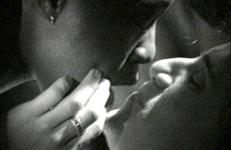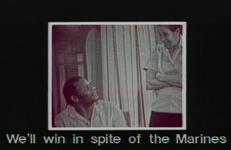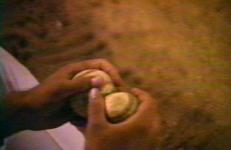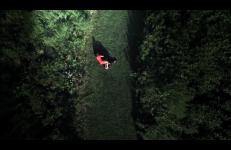From A to Z in this mock cooking-show demonstration Rosler 'shows and tells' the ingredients of the housewife's day. She offers an inventory of tools that names and mimics the ordinary with movements more samurai than suburban. Rosler's slashing gesture as she forms a letter of the alphabet in the air with a knife and fork is a rebel gesture, punching through the 'system of harnessed subjectivity' from the inside out.
"I was concerned with something like the notion of 'language speaking the subject', and with the transformation of the woman herself into a sign in a system of signs that represent a system of food production, a system of harnessed subjectivity."
— Martha Rosler


























